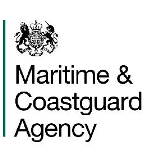A Guide to The Human Element by the UK MCA

Dirk Gregory and Paul Shanahan of the UK Maritime and Coastguard Agency developed the guideco-wrote “The Human Element – A Guide to Human Behavior in the Shipping Industry.” It helps us understand how and why human factors lead to errors and accidents, as these represent the leading cause of disasters in the shipping and offshore industries.
The guide helps to identify countermeasures to avoid human errors and bad decisions, and how to manage the human element on all levels – from engine room, to bridge, to shore.
Part 1:
Introduction to 'The Human Element'
The human element is a primary consideration in the safe handling of any vessel. In this context, human nature can be divided into eight main areas which together make up 'the human element'.
Every aspect is prone to errors:
People actively make sense of things
People take risks
People make decisions
People make mistakes
People get tired/ stressed out
People learn
People work with each other
People communicate

Making Sense of Things
People are surrounded by vast amounts of information and need to make sense of it all. We are bombarded with information from multiple sources, and have to prioritize and select which information to process and the sense that we give to it.
This process is influenced by a number of things, most importantly culture, experience, social needs, and character. As in the office ashore, the manager’s door might be open to welcome everyone, or it might be open in order to spy on his underlings.
How can you judge? According to your perception of the person's character and attributes and previous experience, your judgment alters.
To be able to share the sense of this, we also need empathy and communication skills, but we can still be wrong. We may have focused on evidence that supports our own assumptions rather than appraise the situation objectively, especially under stress.
According to Lloyds Register, an average of 182 large vessels are lost each year, and there is evidence that sense-making is often a cause.
In 1978 a US Coast Guard training cutter was rammed in by a vessel four times its size.
How did it happen? The captain of the Coast Guard vessel noticed an approaching ship. Both vessels were running at full speed and quickly closed up on each other. The captain saw only two signal lights on the vessel, and assumed it was heading in the same direction as he was. His crew members saw three signal lights and knew the ship was coming towards them but did not attempt to communicate this, as it seemed to be obvious.
The captain had incorrectly rationalized the fast-closing speed (as seen on the radar) to be the simultaneous overtaking of a fishing boat. Eleven men died.
The Problem with Making Sense
As we can understand from this example, the patterns and situations that create a problem primarily exist in the heads of people, hence they are unique and often hidden.
Regulators seek to close the gaps by creating stricter regulations and procedures, and the rule books grow bigger, but often this just creates uncertainty and greater complexity. At the same time, people become lulled into a false sense of safety provided by greater automation and technical crutches.
The guide quotes:
“Automation creates new human weaknesses…and amplifies existing ones,” reminding us that humans need to keep pace.
The Human Element: A Guide to Human Behaviour in the Shipping Industry

Post your comment
You cannot post comments until you have logged in.
Login to post a commentComments
No one has commented on this page yet.
RSS feed for comments on this page | RSS feed for all comments